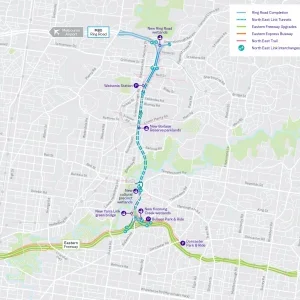
hyperTunnel’s underpass is one of 16 schemes that will be demonstrated at GCRE’s Dulais Valley site in South Wales this year.
The underpass will demonstrate hyperTunnel’s swarm construction technique, which uses AI, digital surveying and swarm robotics to effectively 3D print a structure in the ground before any excavation takes place. The approach is designed to be faster and less expensive to deliver, and carry less risk, less disruption, less waste and a lower carbon footprint than current cut-and-cover construction techniques.
The project aims to provide an economically viable alternative to hazardous level crossings, while improving safety, increasing rail capacity and avoiding inconvenience to road and rail users. hyperTunnel will build a 20m-long pedestrian-sized tunnel under a GCRE test track. The track will remain open throughout the construction process.
The project is funded by the Department for Business and Trade through the competition GCRE: Railway Construction Innovation Phase 2 delivered by InnovateUK in collaboration with GCRE.
“We are delighted that the GCRE sees the same potential in the hyperTunnel method as our partners in the construction industry,” said hyperTunnel co-founder Steve Jordan. “Having spent many hundreds of hours developing our robot fleet in the lab in Basingstoke, the system is now ripe for being proven on a real site, in accelerated test conditions, and which can be visited by interested parties. The GCRE facility is going to be a huge opportunity for us and we can’t wait to get started and to present a feasible technological solution to the long-standing level-crossing issue.”
Currently under construction in South Wales, the GCRE is a world class facility for rail research, testing and certification of rolling stock, infrastructure and cutting-edge technologies. Located on a 700ha site, GCRE will become Europe’s premier site for rail and mobility innovation and act as an incubator for pioneering projects.







